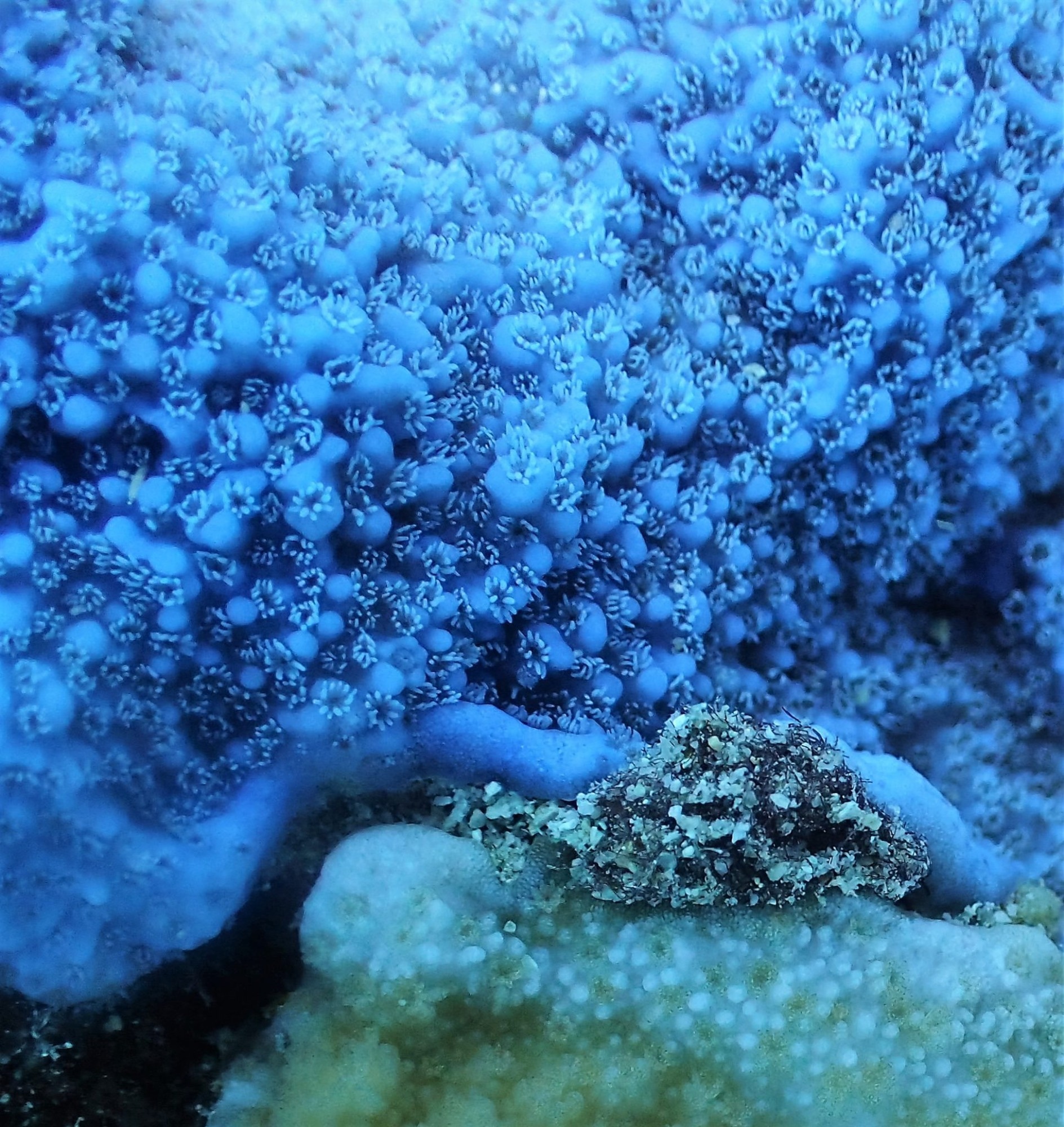Researchers at the University of Hawai'i (UH) at Mānoa have introduced an innovative method for coral sampling, enabling them to generate highly detailed maps of coral biochemistry.
 Close-up of coral shows individual polyps. Image Credit: Ty Roach.
Close-up of coral shows individual polyps. Image Credit: Ty Roach.
These maps provide an unprecedented level of insight into the distribution of crucial compounds that play a vital role in the health and proper functioning of coral reefs. The findings from their study have been published today in Communications Biology.
This work is a major step in understanding the coral holobiont [the coral animal and all of its associated microorganisms], which is critical for reef restoration and management.”
Ty Roach, Study Lead Author, Hawaiʻi Institute of Marine Biology, University of Hawaiʻi at Mānoa
Ty Roach carried out this research as a Postdoctoral Researcher at the Hawai‘i Institute of Marine Biology (HIMB) in the UH Mānoa School of Ocean and Earth Science and Technology (SOEST).
Coral reefs, despite covering only a small portion of the ocean, stand out as one of the most diverse and productive ecosystems globally. They serve as vital habitats for numerous species and offer essential protection for coastal communities.
The biochemistry of these reefs, including substances like amino acids, compounds influencing development and growth, and others with antibacterial or antioxidant attributes, plays a direct role in determining the resilience of coral in the face of stressors such as rising ocean temperatures and ocean acidification.
The team of researchers from the Hawai'i Institute of Marine Biology (HIMB) has devised a method enabling them to examine individual coral polyps, one at a time, in their quest to unravel these critical biochemical processes.
This new technique allows us to sample corals in a way that is much less invasive and damaging than the previous methods, meaning that we can now take more samples and repeat sampling efforts more often with less damage to the coral.”
Ty Roach, Study Lead Author, Hawaiʻi Institute of Marine Biology, University of Hawaiʻi at Mānoa
Employing advanced chemical analyses, the research team successfully identified the precise biochemical components present within each individual coral polyp. Furthermore, they could trace these biochemicals back to their specific locations within the coral colony.
This breakthrough allowed them to construct detailed maps of biochemical distributions within corals, encompassing a range of spatial scales, spanning from individual, 1-millimeter-wide polyps to expansive, 100-meter-long reef systems.
The use of this technique across these scales allowed us to discover a strong biochemical signature that identifies polyps as being from a single colony, a weaker signature between branches within colonies, and variation along the branches that is related to where the polyp came from on the branch. Surprisingly, this method was even able to discriminate between adjacent polyps with very high rates of accuracy.”
Ty Roach, Study Lead Author, Hawaiʻi Institute of Marine Biology, University of Hawaiʻi at Mānoa
Through the process of mapping biochemicals to their origin, distinguishing whether they originated from the coral animal or its symbiotic algae, the researchers made a significant discovery. They found that the compounds within the coral polyps were primarily influenced by molecules that originated from the coral itself, rather than those derived from the algae.
Roach concludes, “Importantly, this work tells us how corals structure their biochemicals across different scales of interest, which is critical for design, analysis, and interpretation of studies on coral reef biochemistry. We plan to use this approach in future studies to map the temporal and spatial distribution of coral biomolecules in ways that were not previously possible without damaging whole coral colonies.”
Source:
Journal reference:
Ty, R. N. F., et al. (2023). Single-polyp metabolomics reveals biochemical structuring of the coral holobiont at multiple scales. Communications Biology. doi.org/10.1038/s42003-023-05342-8.